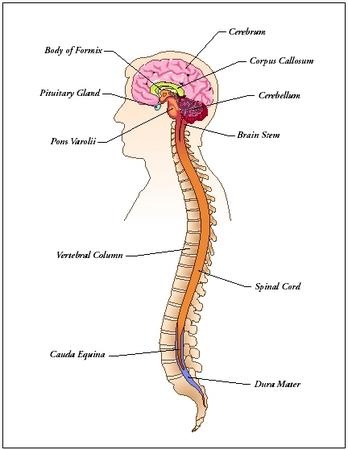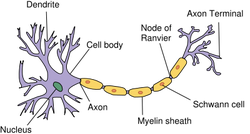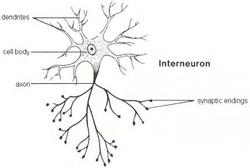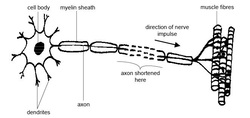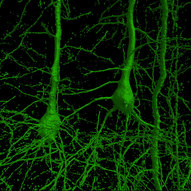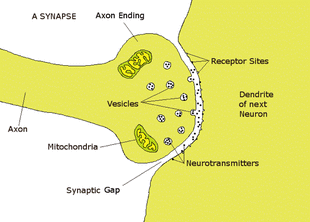Stimuli
Stimuli is one of the essential components of Mrs Gren. Stimuli is part of the sensitivity components and is what organisms rely on to get their necessities such as food. Stimuli and the senses are closely linked. The stimuli is something like smell or light. The receptors pick up these through the senses or sense organs.
COORDINATION & Response
Internal/External Responses:
The internal responses of a platypus is from stimuli such as temperature and digestion. The external responses are from the stimuli on the outside of the platypus' body. This can be like pressure on the skin or an attack from a predator. When an internal or external response occurs, the body will react. It will either have a chemical or electrical reaction. The chemical reaction will be a lot slower and controlled by the chemicals in your body. Chemical Reaction is what gives the platypus its growth. If their is an Electric Response, it will be much quicker than the chemical as it is related to the nervous system.
Secretion:
Their are a few ways in which the platypus secretes. One is when a female wishes to feed its young with milk. To feed its young, it sweats milk from the glands on her body. This is an usual way for a mammal to feed her young. Another secretion which happens in the platypus is the secretion of toxic poison from males. When a male is being attacked by a predator, it will use the spur located on the hind of the limbs to poison the predator. The secretion from this spur is toxic but it is said that it isn't enough to kill a human but severely hurt us. Secretion of milk and venom is an internal response because the platypus does not have full control over how or when the secretion happens.
The internal responses of a platypus is from stimuli such as temperature and digestion. The external responses are from the stimuli on the outside of the platypus' body. This can be like pressure on the skin or an attack from a predator. When an internal or external response occurs, the body will react. It will either have a chemical or electrical reaction. The chemical reaction will be a lot slower and controlled by the chemicals in your body. Chemical Reaction is what gives the platypus its growth. If their is an Electric Response, it will be much quicker than the chemical as it is related to the nervous system.
Secretion:
Their are a few ways in which the platypus secretes. One is when a female wishes to feed its young with milk. To feed its young, it sweats milk from the glands on her body. This is an usual way for a mammal to feed her young. Another secretion which happens in the platypus is the secretion of toxic poison from males. When a male is being attacked by a predator, it will use the spur located on the hind of the limbs to poison the predator. The secretion from this spur is toxic but it is said that it isn't enough to kill a human but severely hurt us. Secretion of milk and venom is an internal response because the platypus does not have full control over how or when the secretion happens.
Central Nervous System
The platypus is like other mammals and so it responds to different stimuli. The central nervous system compromises of the brain and spinal cord. The spinal cord is known as the highway for all the nerves to branch off to the different areas. It is protected by ribs in the mid-section of the body of the platypus. The brain is the control centre for the whole body and is protected by the skull. The central nervous system is where all sensory neurons are sent. It is also where any actions are organised. The central nervous system contains effectors which are both the muscle and glands. These respond to stimuli which have been sent to them through the Central Nervous System. Above is a picture of a human's central nervous system.
Peripheral Nervous System
The peripheral system is made of the nerves which are connected to the brain and spinal cord. The peripheral system is the nervous system which detects the five senses; taste, touch, smell, sound and sight. For these different senses to be able to work, the receptors pick up the available information. The receptors are found in groups and they are cells which detect different stimulus. The receptors are found in sense organs. The platypus has a unique sense organ called the Jacobson's Organ. It is located in the platypus' nasal chamber or on the roof of the mouth. It is full of vomernasal receptors which are able to help the platypus have a strong sense of smell. The platypus also has its 'sixth sense'. This is what it uses to hunt its prey. This is located on the bill on the platypus. There are 40 thousand electro receptors which pick up the electro-magnetic field given off by its prey.
Specialised Cells
The nerve cells also known as nuerons are what carries the messages from one part of the body to another. There are different types of nerve cells such as the sensory, motor, relay and pyramidal. Each of these has its specific jobs
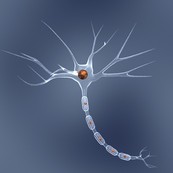
Structure:
The structure of a nerve cells varies on the type of neuron. For example, the sensory neuron has long dendrites and short axons whereas the motor neuron has short dendrites and long axons.
Dendrites: The dendrites are closely related to the axon's. They also contain the synapse. The dendrites will transport information to the cell body. The dendrites also have many cells, a rough texture and contain ribosome. The function of the dendrite is to get information from other neurons.
Axon: The axon, unlike the dendrite, take's the information away from the cell body. The axon seem to have a smooth texture and do not have ribosome.The axon will transmit information to the synapse terminal where it will travel across to another neuron.
Cell Body: The cell body for a neuron is where the protein for the other parts of the cell is made. The cell body also has the other organelles such as the golgi apparatus and nucleus.
Synapse's: The synapse is the area where information travels from one neuron to another. The synapse between two neurons does not physically touch but is extremely close. Below is a picture of a synapse.
The structure of a nerve cells varies on the type of neuron. For example, the sensory neuron has long dendrites and short axons whereas the motor neuron has short dendrites and long axons.
Dendrites: The dendrites are closely related to the axon's. They also contain the synapse. The dendrites will transport information to the cell body. The dendrites also have many cells, a rough texture and contain ribosome. The function of the dendrite is to get information from other neurons.
Axon: The axon, unlike the dendrite, take's the information away from the cell body. The axon seem to have a smooth texture and do not have ribosome.The axon will transmit information to the synapse terminal where it will travel across to another neuron.
Cell Body: The cell body for a neuron is where the protein for the other parts of the cell is made. The cell body also has the other organelles such as the golgi apparatus and nucleus.
Synapse's: The synapse is the area where information travels from one neuron to another. The synapse between two neurons does not physically touch but is extremely close. Below is a picture of a synapse.
Example Of Stimulus
There are many examples for how a stimulus in a platypus may work but below is one that will let you know how a platypus uses it's bill to hunt prey.
As you may know, their are 40 thousand electro receptors on the bill of a platypus.The stimulus given off by a pray's muscle movement is picked up by these receptors on the bill of a platypus. A sensory neuron will take information to the spine, where a relay neuron will take that information to the brain. From there, a motor neuron will carry a message back down and tell the platypus where the animal is. The platypus will know where the food is and therefore be able to locate it easily.
As you may know, their are 40 thousand electro receptors on the bill of a platypus.The stimulus given off by a pray's muscle movement is picked up by these receptors on the bill of a platypus. A sensory neuron will take information to the spine, where a relay neuron will take that information to the brain. From there, a motor neuron will carry a message back down and tell the platypus where the animal is. The platypus will know where the food is and therefore be able to locate it easily.
